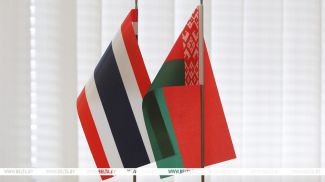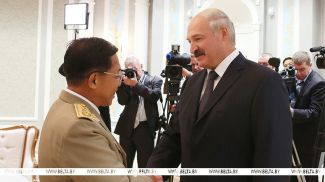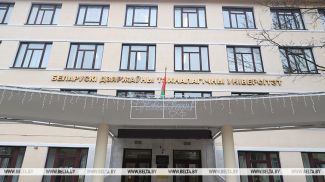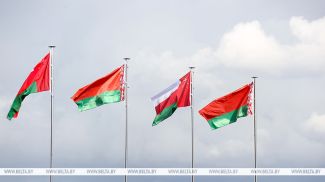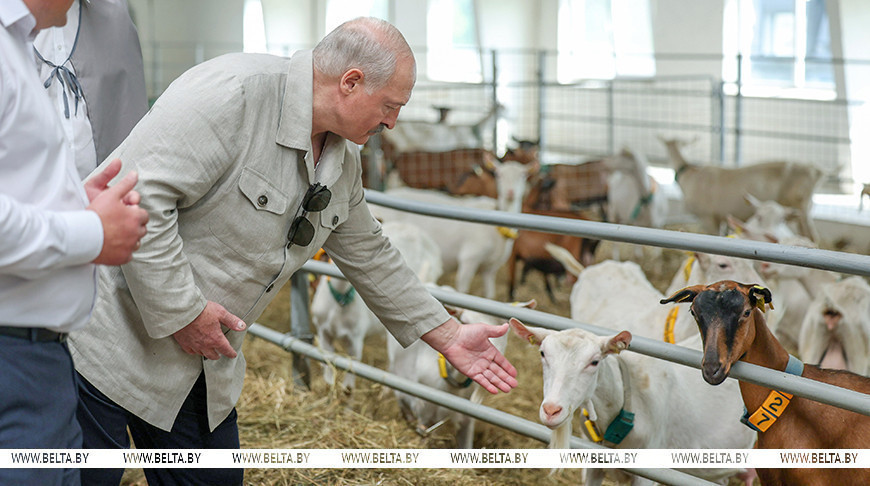
News of the story
"After the Fact: Lukashenko’s Decisions"
This July, the Belarusian president visited an unusual farm - a goat breeding farm. We’ll explain later why this small farm received such high-level attention. But this trip made us wonder about the state of pedigree livestock breeding in Belarus as a whole? What does it focus on? After all, as Aleksandr Lukashenko stated 15 years ago, billions of rubles should be invested in this promising sector rather than in subsidies. In this episode of BelTA’s YouTube project “After the Fact: Lukashenko’s Decisions” we will tell you why a pedigree bull can cost more than a luxury foreign car and what Belarus’ “golden breed” of cows will look like? Why has Belarus ventured into goat breeding, and what did the president demand from officials and livestock farmers? What kind of milk did Putin offer to Lukashenko as the Belarusian president visited Russia? What is Belarus working on ?
Why did Belarus venture into pedigree livestock breeding?
Belarus is the only post-Soviet country that has preserved its breeding sector after the collapse of the Soviet Union. In July 1994, Aleksandr Lukashenko won the first presidential election, and just two months later, he signed a law on livestock breeding. The president knew that feeding the people was the top priority, and the productivity of this sector could be improved through systemic breeding and selection efforts.
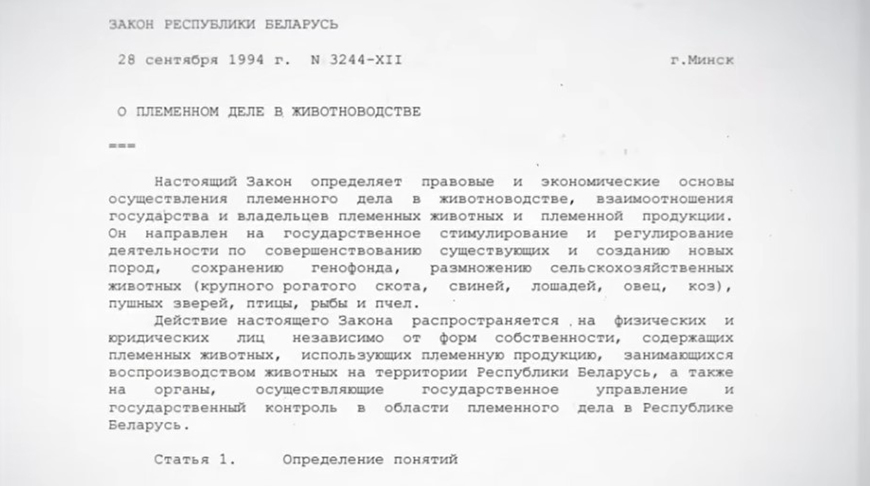
A couple of years later, the country also developed a comprehensive breeding program. However, by that time, agriculture had accumulated too many problems requiring immediate solutions - and breeding was perhaps not the most pressing one. As a result, focusing on these issues was not easy. Nevertheless, everyone recognized that breeding livestock is highly valuable worldwide, meaning that developing Belarus’ own breeding industry was of particular importance.
“We can take pride in our breeding successes in the Republic of Belarus, as we have achieved complete self-sufficiency in semen production across all livestock sectors. The genetic potential of our dairy herds is already demonstrating remarkable results. Some agricultural enterprises reported milk yield per cow over 13 tonnes last year. Entire districts have already reached the 10-tonne-per-cow milestone. This year, Brest Oblast is expected to surpass the 8-tonne threshold. Moreover, they and Grodno Oblast have set an ambitious target to reach 9 tonnes per cow by 2030. These are world-class- productivity levels,” said Natalya Sonich, Head of the Main Directorate for Intensification of Livestock and Fish Production at the Agriculture and Food Ministry.
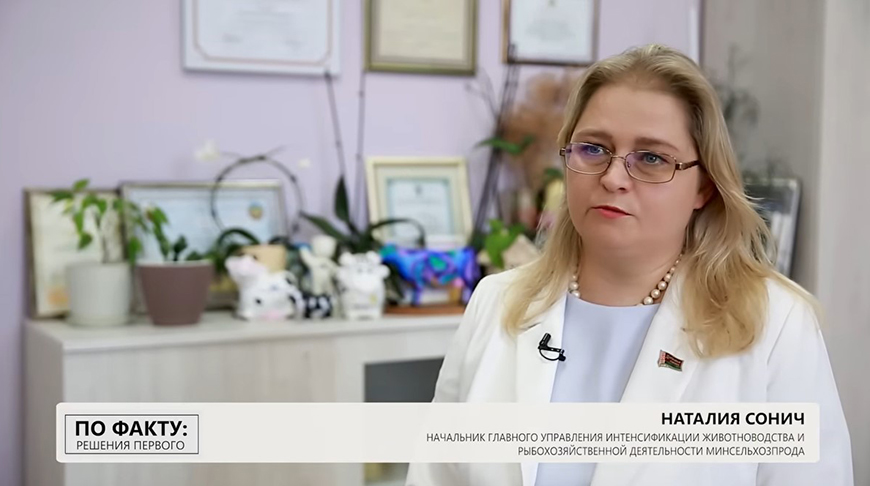
In 2008 when touring the Nesvizh subsidiary of the Minsk pedigree farm, Aleksandr Lukashenko stressed that breeding should get as much attention as the work to return lands to crop rotation.
“Breeding business holds a great promise. Without it, there can be no economy, nothing. This is why this issue is of top priority. It takes priority in terms of funding. Specialists in this field are worth their weight in gold. Just like we pay top surgeons performing high-complexity operations, we must pay these professionals accordingly.”
Remember, I got a lot of flak for my handling of agriculture, but today the result is obvious. With our technology and equipment, we should get twice as much as in Soviet times. After all, we use intensive rather than extensive production methods. The tasks are demanding, and those who can’t handle them should leave. There is no other way, competition is increasing in the world, we must get ahead of our competitors,” the president said.
New Belarusian cow breed
Over the past years, huge amounts of money have been invested in dairy production. And today, most of the dairy herd is kept in modern high-tech complexes. But even there, milk yields can vary significantly depending on the breed composition of a dairy herd. Black and white cattle are primarily used for dairy production in Belarus. But there are also experimental breeds.
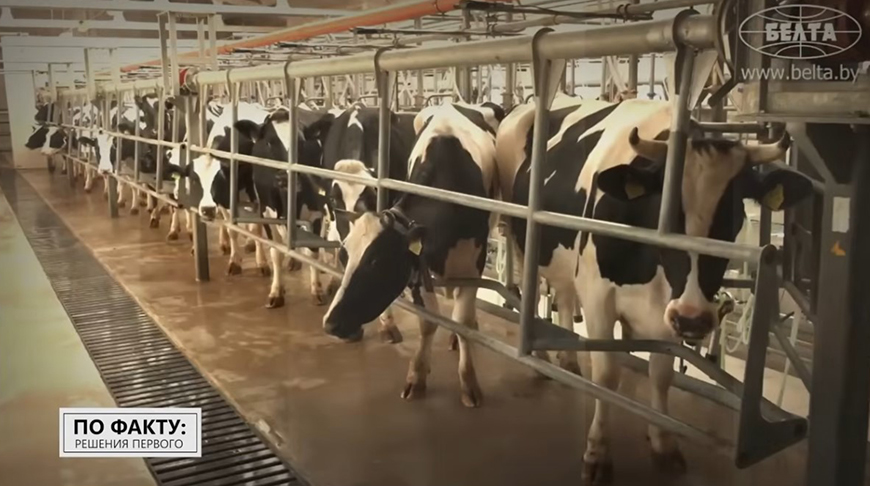
Belarusian scientists are working on a new cow breed - a Red Belarusian breed. It will have good genetics, strong bones and higher quality milk. Breeders also call it ‘the golden breed’.
“We are now proceeding to the genomic analysis. We can analyze the genome of a bull that has not yet been born, break it down into 54,000 loci and see whether it will improve or worsen herd genetics. If it worsens it, we don’t use it for breeding; we send it to a fattening area and then to a meat processing plant. And if it has good genetic traits, it stays, we receive sperm from it and assign it to a certain herd. We are proud of preserving the breeding service in our country. At each agricultural organization, at each dairy complex, a herd of bulls is assigned. And they are changed every two years to avoid inbreeding. This is monitored at the district, regional and national levels,” said Natalya Sonich, Head of the Main Directorate for Intensification of Livestock and Fish Production of the Agriculture and Food Ministry.
Breeding and selection are by no means a cheap business: a high-quality breeding bull can cost as much as a luxury car. For example, a Black Angus bull that starts working at 12 months and has an average service life of up to 10 years, can cost up to $150,000. Not a bad investment option, right? And to buy elite Danish cows to obtain the Red Belarusian breed, scientists got €3 million. And all these investments are quite justified: advanced technologies allow creating an elite core of a breeding herd within a short time, maximizing the potential of the breed and achieving high productivity.
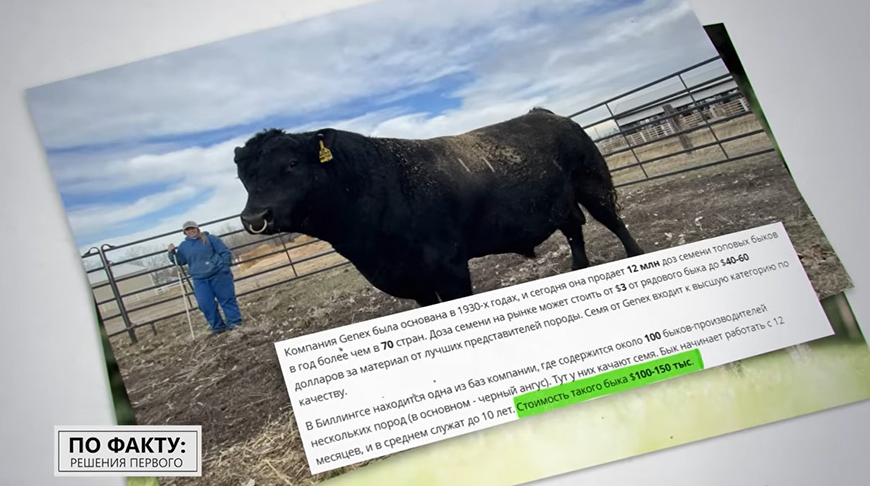
“Now we have a unique basic breed in the country, but we will create our own, Belarusian breed. We have good Holstein cattle, but that is not enough. We need to have several breeds for all types of animals - for dairy cattle, for pigs, and so on. Now all actions being taken are in agreement with the stated rules and requests,” Chairman of the Presidium (2013-2025) of the National Academy of Sciences of Belarus Vladimir Gusakov said at the meeting to discuss rural development and efficiency of the agricultural sector that was held in 2024.
The president showed interest in the details and stressed: “Everything must be done efficiently.
Why does Belarus need goat farming?
We have already covered the dairy farming in Belarus and why Lukashenko demands treating a calf like a child, while a cow is sacred to him, in our previous episodes. But why does the president encourage goat farming?
There is a solid demand for pedigree goats in Belarus and abroad. Belarus has already sold goats to Uzbekistan; there are orders from Russia. Profitability reaches 25%, which is a very good result. Breeding work is underway in the country, but Aleksandr Lukashenko wants to take it up a notch. He wants faster expansion and larger farms engage in goat farming across the country.
“Why not do this? Demand is growing, including in Russia. Why not step it up? This is a good, promising industry with robust demand. We should stop muddling along. We should aim for a two-time growth while there is demand. This is real money. We should make the most of it. We should seize opportunities to generate income and establish a strong presence in the market,” the head of state said as he visited the pedigree goat farm in Mogilev.
Pedigree goats have been raised in Mogilev for several years. Initially, it was a goat farm, but it later gained the status of a pedigree breeding facility. The enterprise is working to establish herds with high genetic potential in the country in order to phase out the import of pedigree goats and ramp up their export. Work is also underway to create an artificial insemination station.
“The work to build this breeding farm began in 2021. For this purpose, 350 female and 20 male Saanen and Alpine goats were imported to Belarus. They are hardier, disease-resistant, and highly productive. Our goal is to unlock the genetic potential of these high-value animals to further develop goat farming in the country,” said Yelena Maslak, Deputy Director at Mogilev State Enterprise for Breeding and Herd Reproduction.
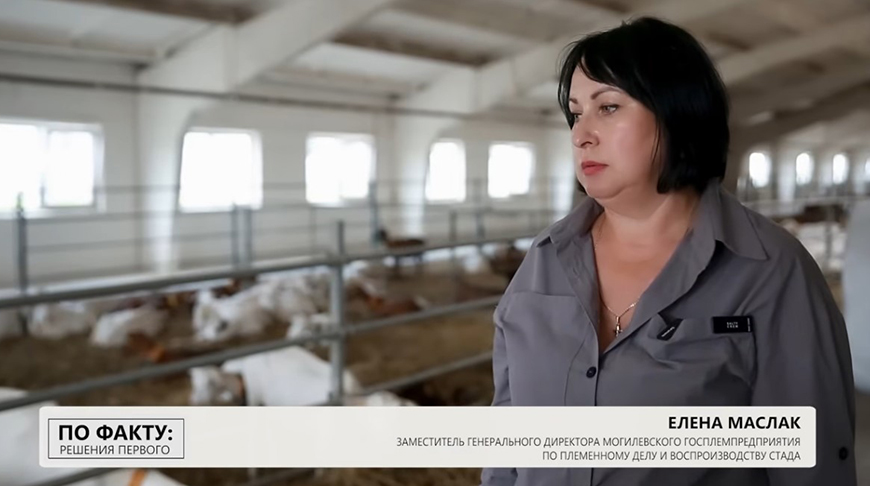
Goat breeding features
Nikita Zelinsky, Head of Production at the Pedigree Goat Breeding Farm said that the farm began with 150 head. In 2023, it purchased another 200. The farm now has 687 pedigree goats.
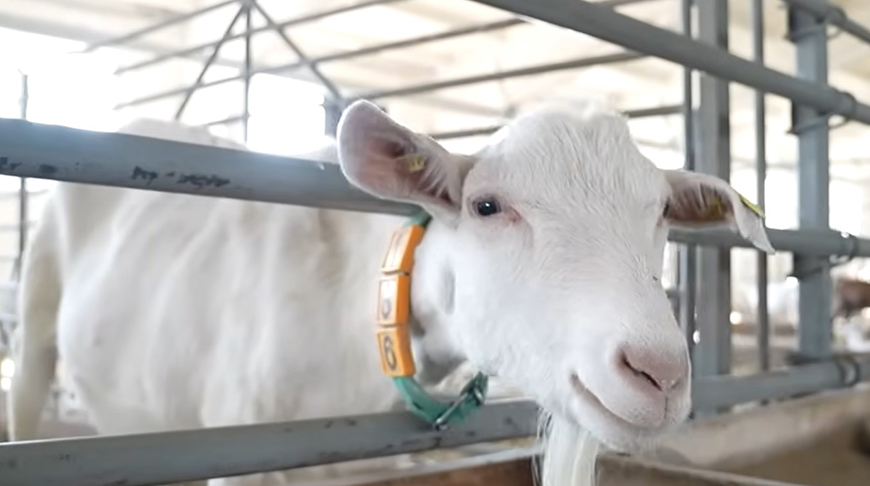
“The key to keeping goats is cleanliness. The work is great, really rewarding. The animals are drawn to people, but not to me. I deal with blood sampling, treatments, injections, and hoof trimming. They are a little afraid of me.”
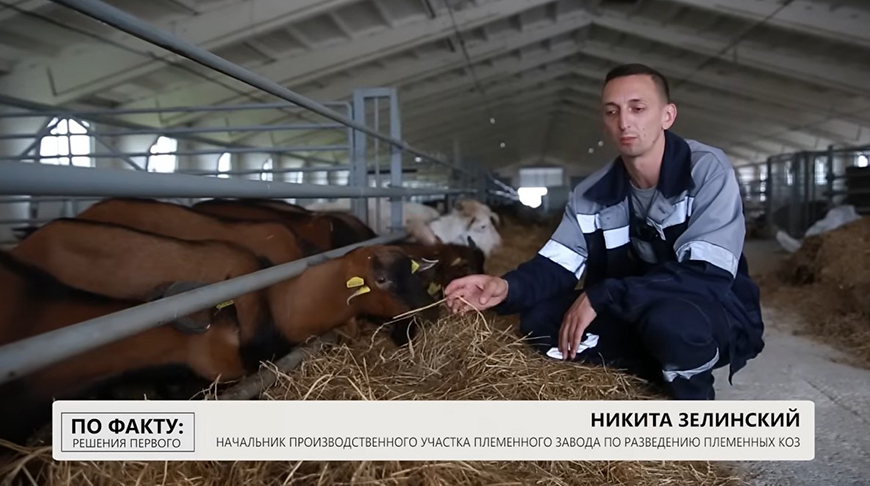
“A kid is born and placed with its mother in an individual shelter. They stay there for 5-7 days. After this, the mother goat moves to the milking section for lactation, while the kid is transferred to a larger shelter that can house six kids. The babies are bottle-fed for 70 days before moving to a group shelter,” he added.
The total number of goats in Belarus in all types of agricultural entities is 48,000. Of these, 93% are raised by households, another 2% by peasant farms, and the remaining 5% by agricultural enterprises. The last figure requires serious attention and further development.
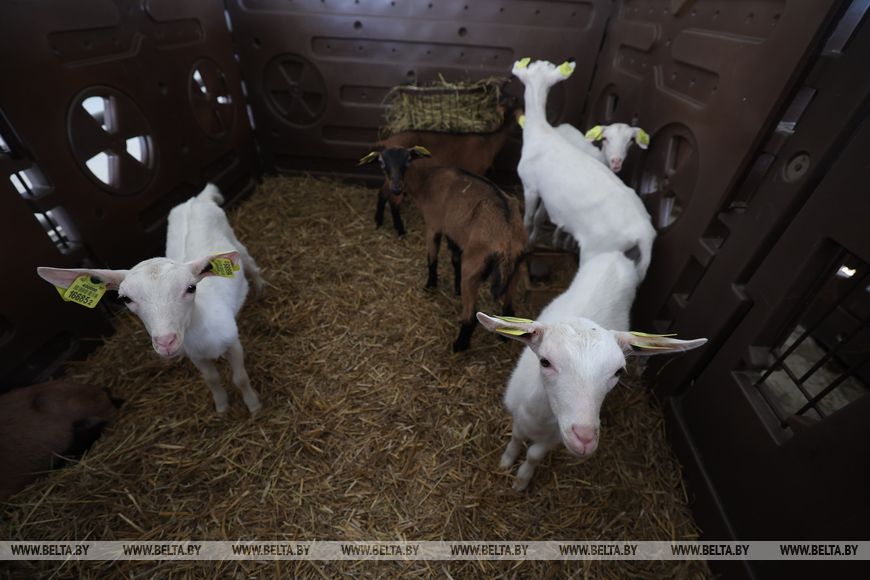
“Many children and adults in our country suffer from allergies. Cow milk isn’t suitable for everyone. This is why goat milk has long been seen as a source of health. We have prioritized the development of goat farming to provide our processing industry with high-quality goat products, especially for baby food production. Our goal is to promote domestic production rather than relying on imports. In both private households and agricultural organizations, some goats produce up to 7 kilograms of milk per day. For example, at Mogilev State Breeding Enterprise, goats produce 5.8 liters per day. This suggests that keeping low-productivity cows, those producing only one tonne of milk per year, may no longer be economically viable. It might be more efficient to keep goats, which require less feed and have lower maintenance costs,” Natalya Sonich remarked.
What kind of milk did Putin serve to Lukashenko?
Goat milk produced in Belarus has no distinctive smell and tastes very similar to cow milk, as confirmed more than once by the president of Belarus. During his working trip to Mogilev Oblast, Aleksandr Lukashenko shared that he had once been served goat milk by Vladimir Putin. Why was the Belarusian president surprised?
“[Vladimir] Putin served it to me in Russia. If he hadn’t told me it was goat milk, I would’ve thought it was cow’s,” Aleksandr Lukashenko said while visiting a goat farm near Mogilev.
During that visit, the president also tried goat milk and cheeses made from it. The cheeses currently produced in Belarus contain a mixture of goat and cow milk. The head of state was assured that there is strong market demand and good profitability: Belarusian goat products are already being sold in Russia.
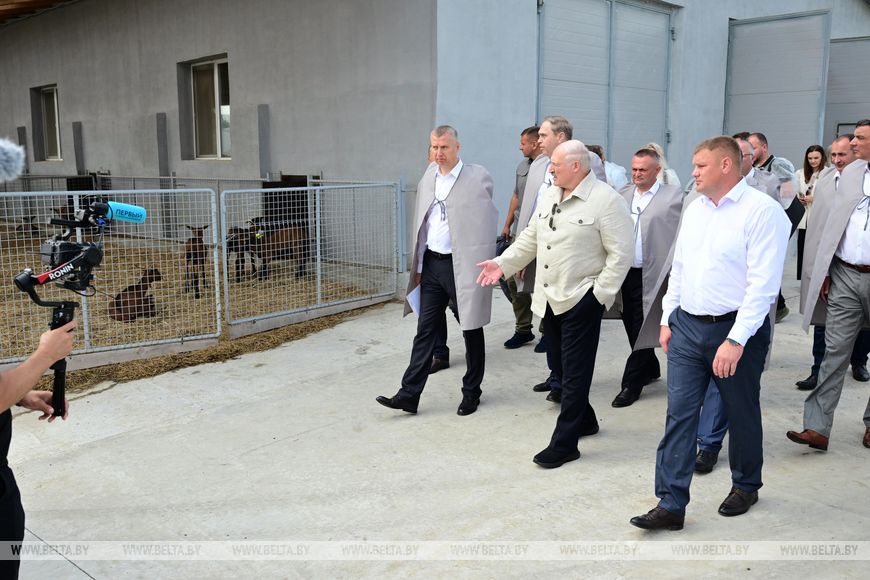
Aleksandr Lukashenko praised the taste and health benefits of goat products: "Excellent milk. And it’s especially important for children," he said. "Nutrition is, above all, psychology. If you don’t know it’s good for you, it’ll take time to get used to it, you'll need to be persuaded to drink or eat it. We need to convey the value of these products to consumers and demonstrate that they are highly beneficial."
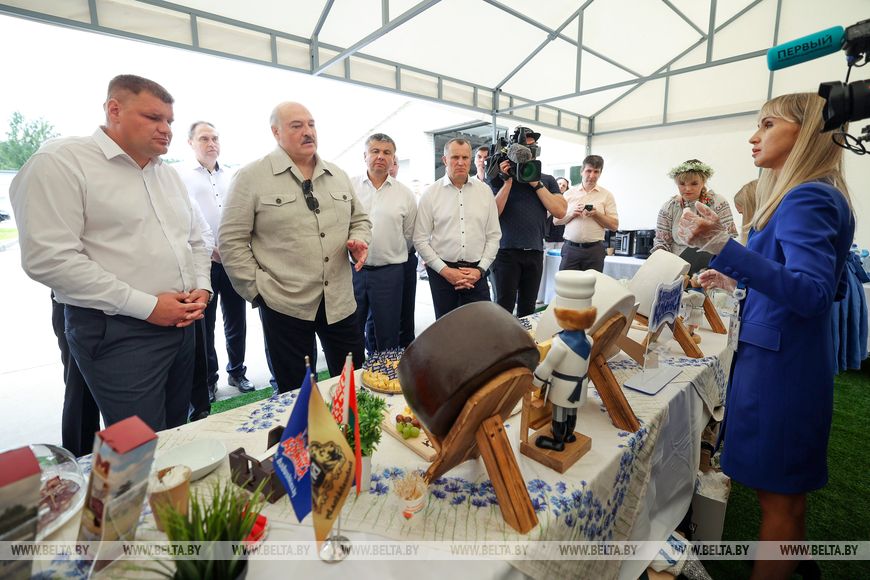
The president’s strict requirements apply not only to goat farming, but to all sectors of agriculture. Over the years of independence, Belarus has achieved impressive results, exporting agricultural products worth billions of dollars. Yet, we need to think about the future, instead of resting on our laurels, Aleksandr Lukashenko stressed. We must always look ahead and take action.






